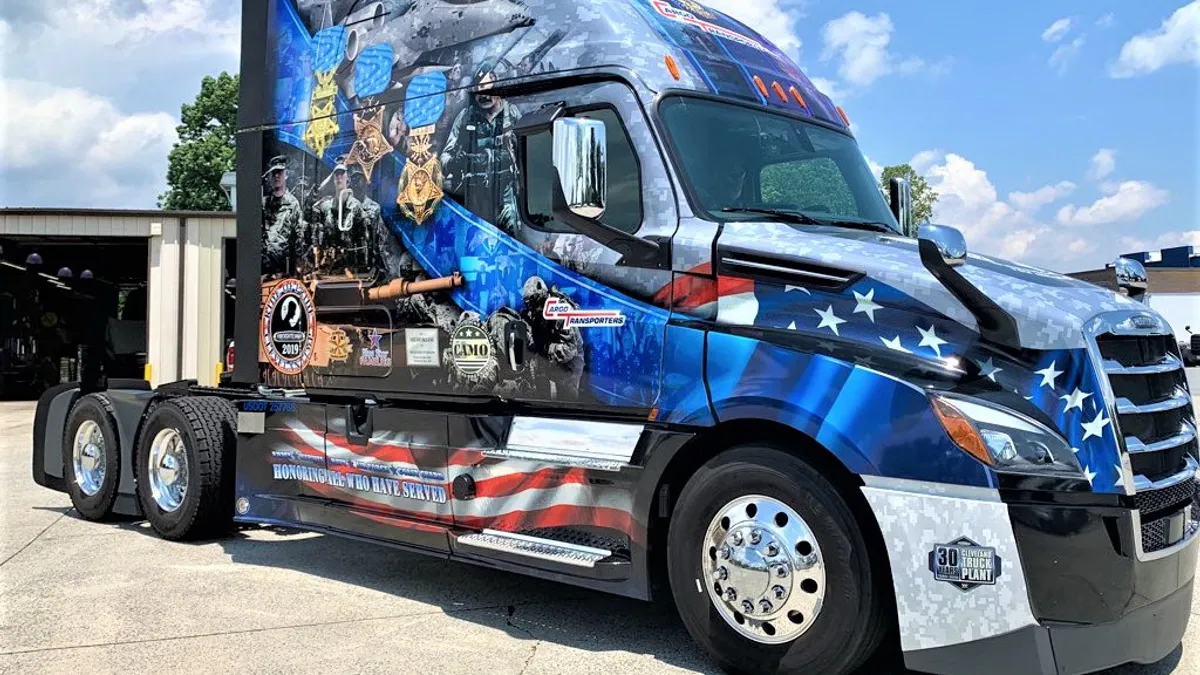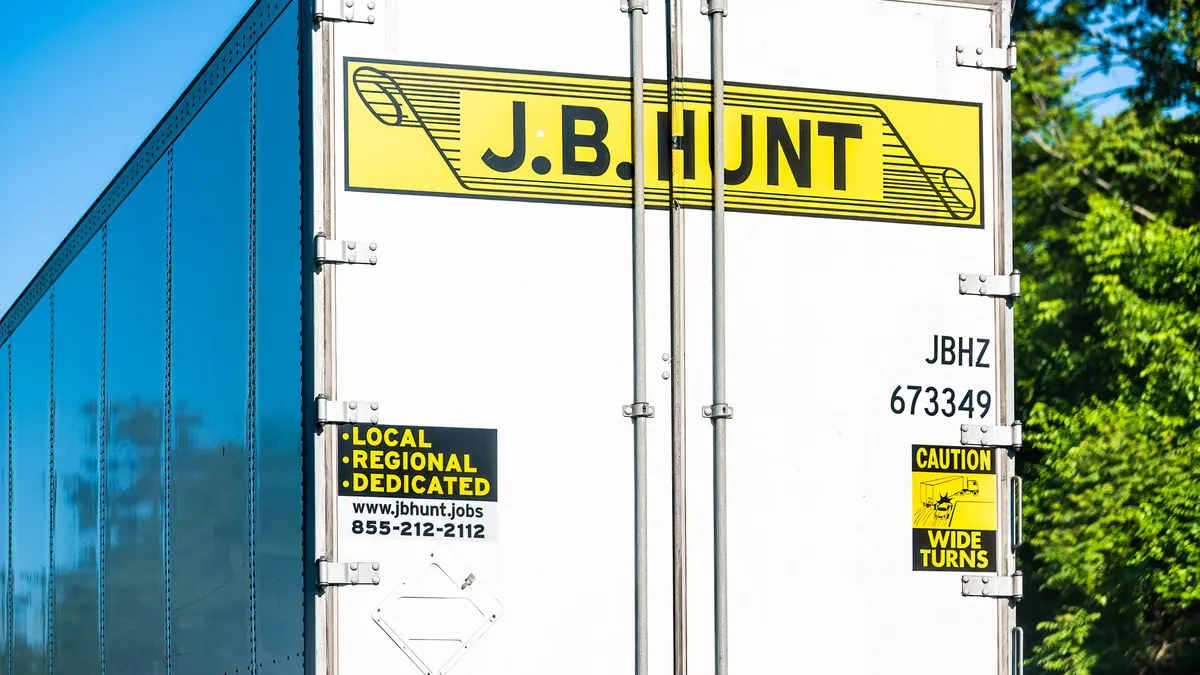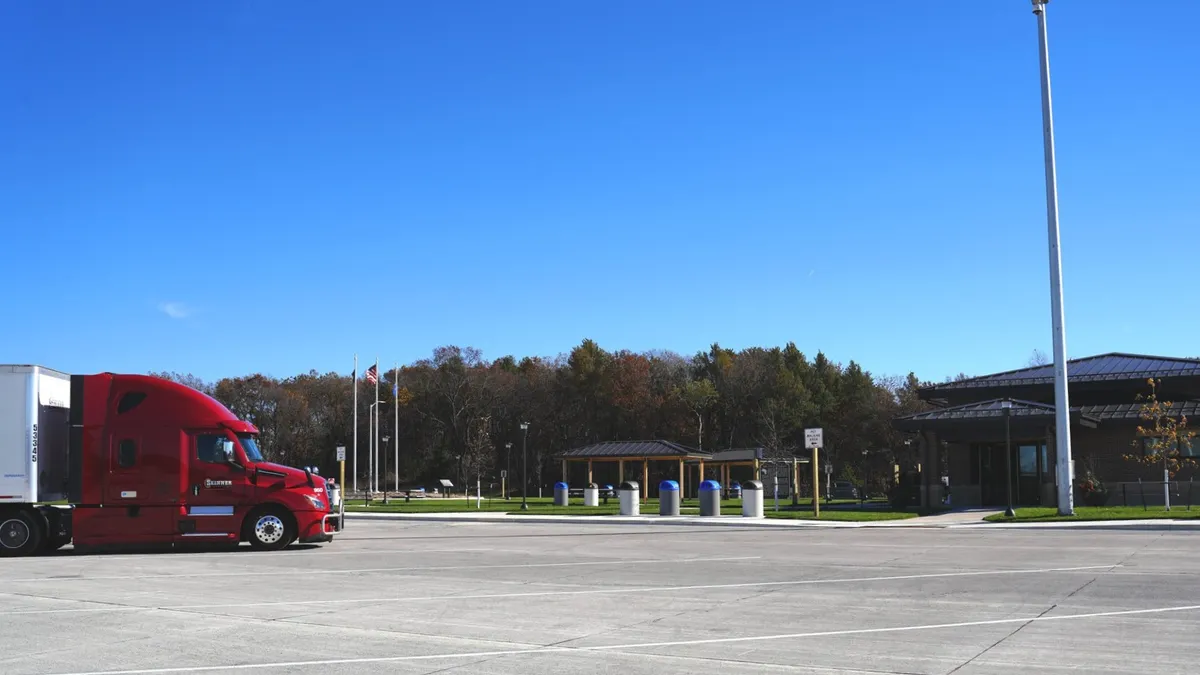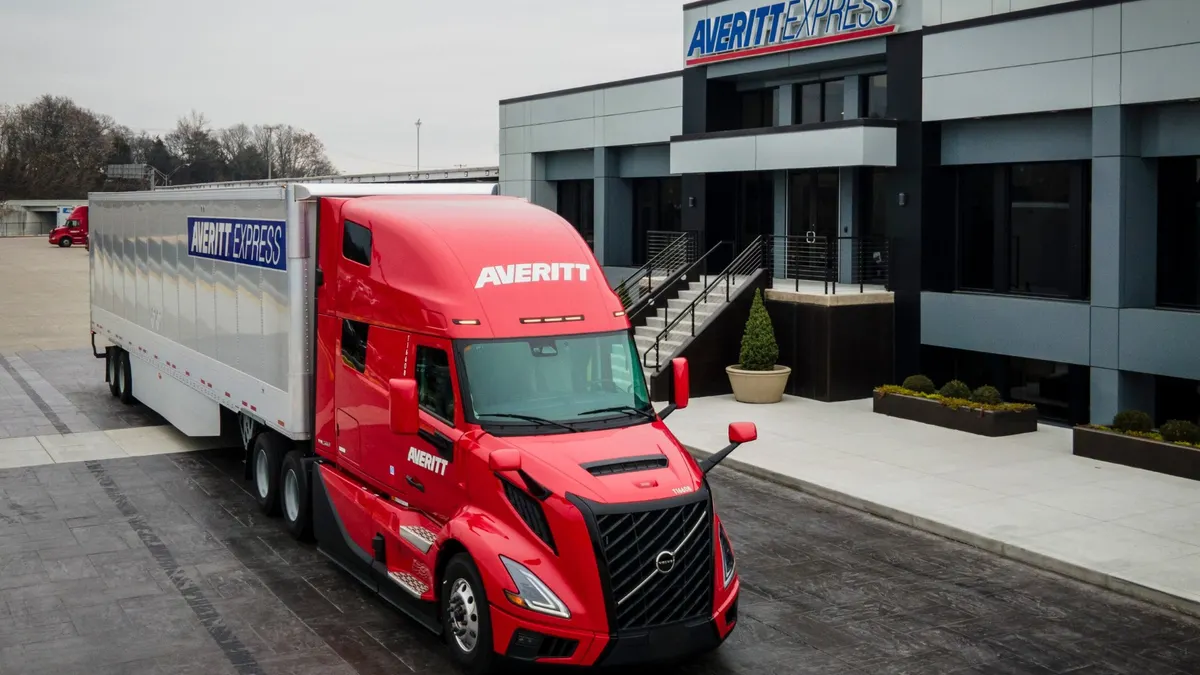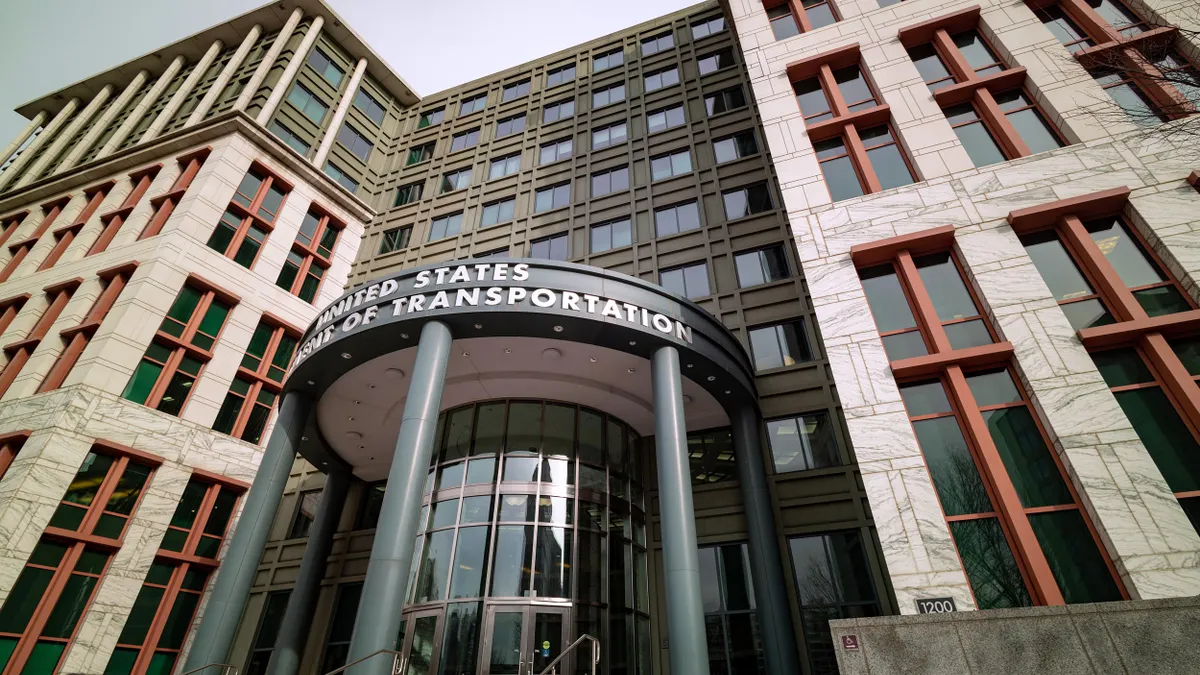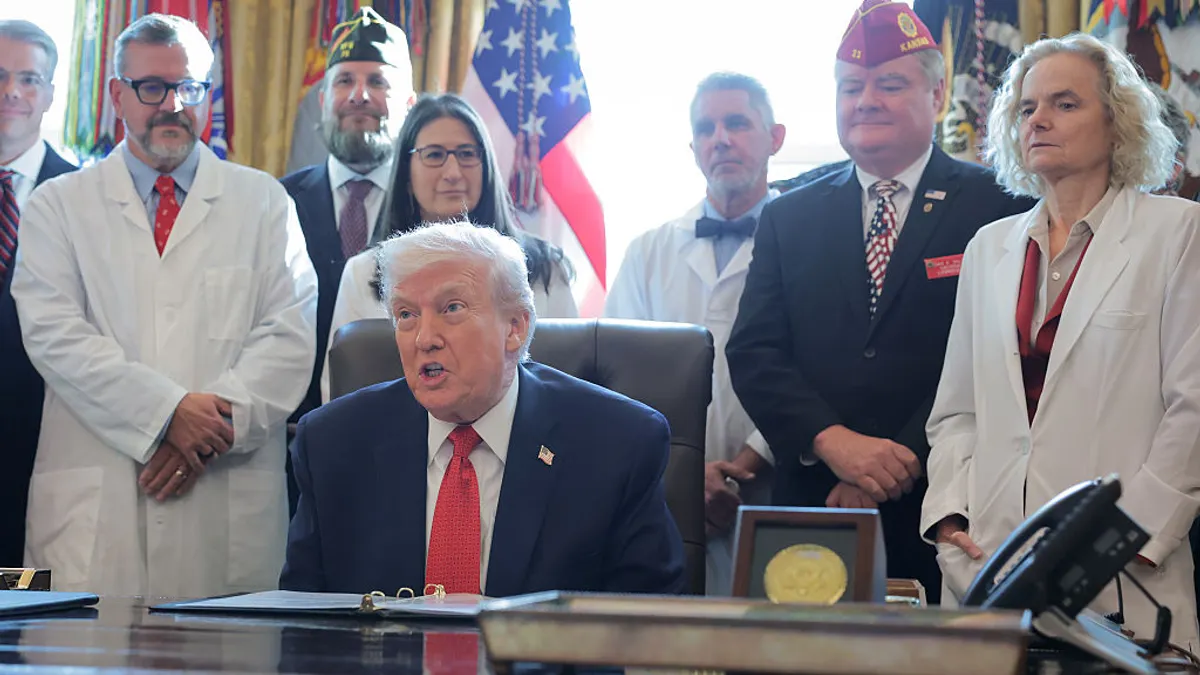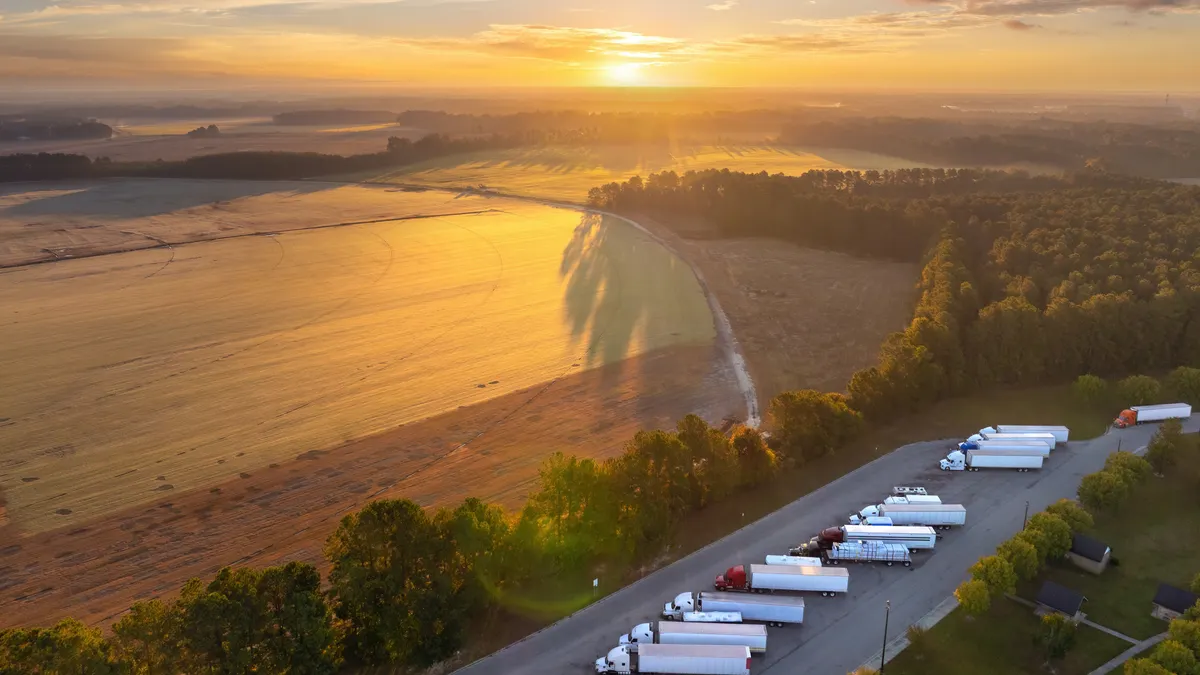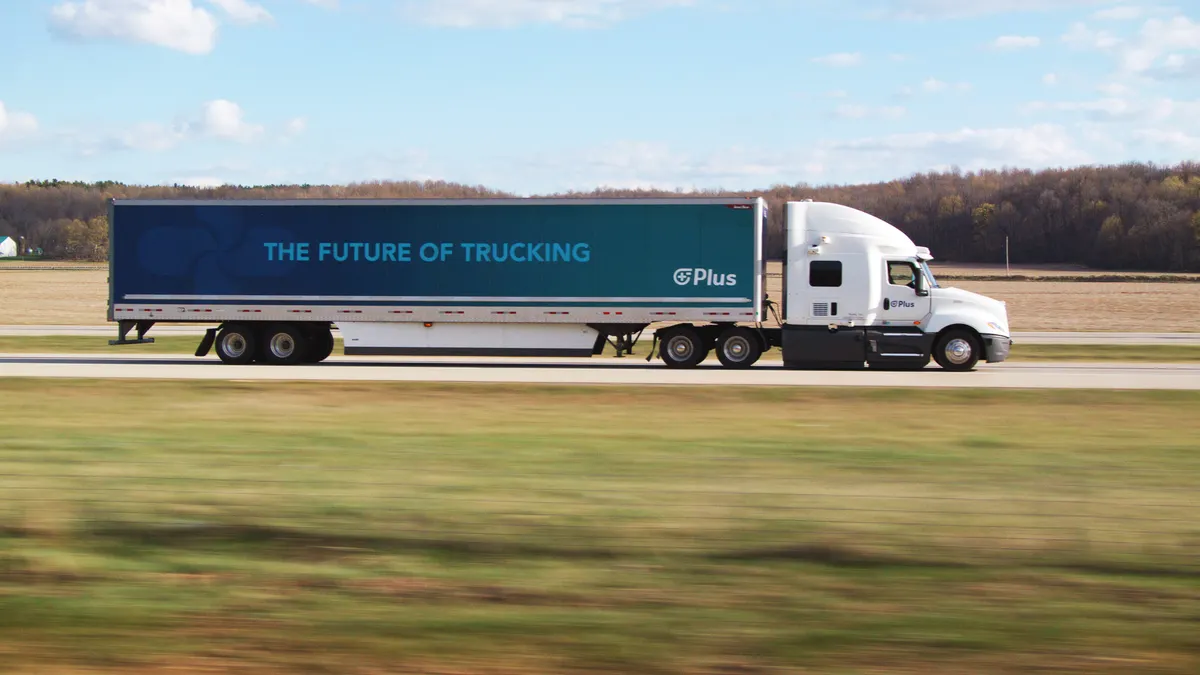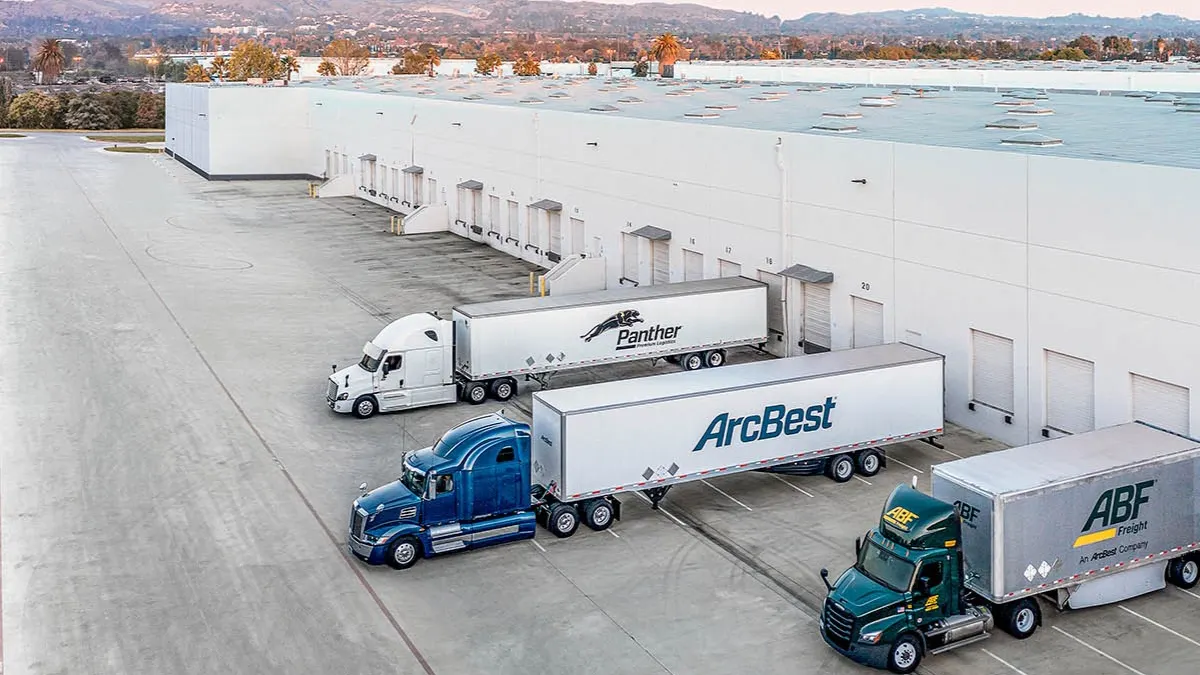It was early 1975. The Vietnam War was slowly winding down but the Cold War was heating up.
In a small Oklahoma town, 17-year-old Rick Miller mulled his future. He decided to join the U.S. Marines Corps with a friend. Off young Miller went to a base in San Diego to train.
Before long, Miller was a Marine non-commissioned officer, and rose through the ranks to the position of gunnery sergeant, an E-7 listing. What Miller did not know at the time was he was also in training to be a top truck driver, one who would be invited to the White House in 2020. Miller spent 20 years in the Marines. When he left in 1995, the transport industry became an attractive secondary career option for Miller, then only 37 but with a wealth of experience. And trucking was familiar: His grandfather, father and younger brother worked as truck drivers.
Over the years, Miller drove mostly straight trucks with a Class B CDL. He decided to make a change in 2004, and obtained a Class A CDL. In 2005, Cargo Transporters of Claremont, North Carolina, hired him as a full-time driver. Miller, now 62, is still with Cargo Transporters.
Miller said it wasn't so much the precise training he got on firing a rifle or living in the woods that helped him thrive in trucking. And it wasn't the almost two decades he served in a Marine department handling paperwork. It was everything in a ball, from discipline to mission-centered thinking. Now his mission is driving and exploring, much like a military mission.
"It's a natural fit," said Miller. "You get to see the United States, and explore it."
Fleets look to vets
Fleets expect the driver shortage to increase over the next several years, and trucking firms have expressed interest in recruiting more veterans to Giovanni Colosi, vice president of driver careers at driver-staffing company TransForce Group. And XPO officials said they expect 6% of all 2021 hires to be veterans.
Colosi doesn't have to be told veterans make good candidates for Class 8 drivers. Colosi is a veteran, having served as a lance corporal in the Marines until 1999. When he left the Marines, Colosi initially did not know what to do next.
"After that, I transitioned into the civilian world, and it's a difficult transition," said Colosi. "There's a gap. It's a lot different."
TransForce leases drivers to trucking companies and counts 1,500 fleets as clients. It dispatches 4,000 drivers daily. If TransForce wants fleets as return business, it needs to train drivers well. Colosi said veterans are among the best candidates, but sometimes they need help on going from taking orders every day to the independence of civilian life.
Coming from a very structured military world to the less-structured civilian world can be a shock, and sometimes even disheartening, said Colosi. In recruiting vets, fleets need to be aware of how to ensure the transition goes well, he said.
"I believe veterans bring certain skill sets, a different training that you go through throughout your career ... You have some really great habits."

Giovanni Colosi
Vice President of Driver Careers at TransForce Group
"I believe veterans bring certain skill sets, a different training that you go through throughout your career," said Colosi.
Traits that Colosi sees in military veterans include leadership, discipline, teamwork and an attention to detail.
"You have some really great habits," said Colosi.
TransForce starts early on the transition for many veterans by beginning training for members of the U.S. Armed Forces on several bases. Soldiers and Marines transitioning out of active duty are able to learn how to drive a big rig on bases, before they have been discharged. It's an arrangement with the Pentagon to help military members make a smooth transition into the civilian workforce.
To make the transition easier, TransForce conducts calls with veterans while they are going through the CDL training. The calls are run by a veteran to review employment opportunities, and give the candidates a chance to talk through some of the issues and problems they encounter, Colosi said. TransForce also offers counseling as part of TransForce Group's benefits.
On the road or on a mission
There is still some training for veterans and military members that may be entirely new. Soldiers, naval members and Marines may not be used to spending days alone. But here the discipline kicks in when many drivers leave CDL school and have to drive over the road.
Drivers are away for long times, and many veterans, including Miller, only want to do OTR for a short time, perhaps because as veterans, they have spent a lot of time away from home. Colosi said fresh veterans tend to want to stay closer to home once they leave service, to be closer to family.
"I ran OTR with [Cargo Transporters] for three years," said Miller. "I wanted to be home more. I'd rather be home and make less money."
Now Miller drives a day cab. Either way, driving a big rig is a lot like a military task.
"In the military, you are assigned a mission and go do it," said Miller. "They trust you to do the job. And in the military, you are taught discipline."
There is evidence to back that sentiment up. In November 2016, Omnitracs' then-CEO John Graham wrote on his company's blog that one national fleet reported veterans had 44% fewer accidents than the rest of the carrier's driving population, all while vets drove almost double the miles. Graham said the national carrier also reported that veterans had 62% fewer voluntary terminations.
Locating on base
TransForce runs a "Troops in Transportation" program, operating CDL schools on military bases to help soldiers transition out of the service. Colosi said TransForce is on several Army and Marine bases, although he declined to specify the number, training many soldiers, sailors and Marines who are transitioning out of service.
Recruiting is strong, Colosi said, and classes are full. Nationwide, at civilian schools and on bases, TransForce graduates about 70 to 80 drivers a week. More than half of their graduates, 59%, are veterans or soldiers transitioning out soon.
Once graduated with a CDL, TransForce employs the drivers while at the same time employing them with carriers. That duality gives TransForce the ability to keep the drivers while they may switch carriers.
"We want to make sure our drivers are happy," said Colosi. "As their needs change ... we can move them from one account to another, and they are still employed by us."
The only challenge that comes to mind in placing veterans is that they may have no on-the-road experience when graduating from CDL school, Colosi said. Colosi said many carriers are being limited by insurance companies to drivers with minimum experience, usually six months to a year.
"It really opens up after a year," said Colosi.
Veterans often have experience working with equipment worth much more than a Class 8 truck. That is perhaps one reason the FMCSA is conducting a three-year pilot to determine the feasibility and safety impacts of allowing 18-to-20-year-old military drivers to operate commercial motor vehicles in interstate commerce. Class 8 truck drivers under 21 are currently not allowed to cross state lines.
As for work experience, veterans have often faced heavy work and tall tasks, said David May, 61, a driver with XPO. They are expected to maintain equipment, drive vehicles and meet a schedule.
"In the military, there's no end to what you may have to do," said May, who served in the Army and was discharged in 1979.
Vets have been trained to work as a team but also as individuals, May said. But when soldiers, airmen, sailors and Marines leave the service, they may not know what to do next. May said he wondered about where he would earn a living wage with health benefits. Along came trucking. May has been with XPO for 24 years.
"They're trying to find you. They're trying to offer you a career."

David May
XPO driver and Army veteran
"[Driving] was a comfort zone for me," said May. "I enjoy making my own decisions. I enjoy being outside, and I enjoy working with people."
So as trucking faces a shortage of drivers, May says veterans and soon-to-be discharged soldiers should look at trucking.
"They're trying to find you," said May. "They're trying to offer you a career."
Miller was one such veteran found by a carrier. His driving eventually got him recognition at the White House. Miller was invited to a July Fourth celebration with the president to honor essential workers who labored during the initial stages of the COVID-19 pandemic. Even out of uniform and long retired, veterans are still serving their nation in vital ways — as drivers hauling food, medical supplies and more. They are keeping the supply lines going, using the experience they learned in the U.S. Armed Forces.

